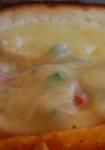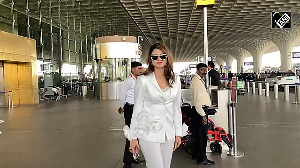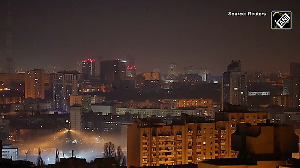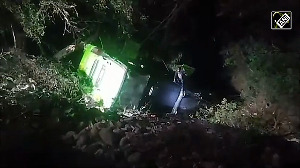The Australian Open turns 100 this year, a remarkable feat for a tournament that has reinvented itself several times as it struggled to cement its place as the fourth Grand Slam of tennis.
Now billed as "The Grand Slam of Asia/Pacific", the tournament began in 1905 as the Australasian Championships soon after Australian and New Zealand officials formed the Australasian Lawn Tennis Association.
Seventeen men -- women did not compete until 1922 -- contested the inaugural tournament at the Warehouseman's Cricket Ground at Albert Park in Melbourne.
The Melbourne Cricket Club's Rodney Heath defeated Adelaide doctor Arthur Curtis 4-6, 6-3, 6-4, 6-4 in the final in front of around 5,000 spectators.
A century later, the Open is Australia's biggest annual sports event, attracting some 500,000 fans for two weeks each year to its state-of-the-art Melbourne Park home.
While the tournament celebrates its centenary year, the January 17-30 event will actually mark the 93rd time it has been staged. The two world wars intervened from 1916-18 and 1941-45.
SLAM SIBLINGS
Despite its aged status in Australia, the Open is a youngster compared with its three Grand Slam siblings, with Wimbledon more than a quarter of a century older.
While Wimbledon, the French Open and the U.S. Open have gone from strength to strength, "the Aussie Open" was struggling by the mid-1980s at the quaint but impractical Kooyong Lawn Tennis Club in suburban Melbourne.
Australians had dominated the tournament but the start of the Open era in 1968 took an unexpected toll, with the game's biggest names reluctant to leave their lucrative professional circuits in Europe and the United States for the long trip to Australia.
Coupled with Kooyong's inadequate facilities and no room to expand, the tournament's future was at stake and the decision was taken in 1985 to move.
A new complex with its 15,000-seat main stadium covered by a retractable roof was completed by 1988 and the event has never looked back, even though some still lament the loss of Kooyong's grass for Melbourne Park's Rebound Ace hardcourt surface.
Crowds increased by 90 percent to 266,500 in the first year at Melbourne Park, bringing with them sponsors and financial security.
The move also offered a sense of permanence. In its early years the tournament was shared between Sydney, Melbourne, Adelaide and Perth. Melbourne was made its permanent home in 1972.
PERTH ZOO
Frank Sedgman, who first played the event at Sydney's White City in 1947, remembered it as a far cry from the modern game.
"They played two or three matches at a time on centre court. It was amazing. There were balls all over the court," Sedgman says in a book celebrating the centenary.
"We didn't sit down at the change of ends -- there were no chairs...In comparison to today's matches we played pretty quickly -- a five-set match would take under two hours," said Sedgman, who won the event in 1949 and 1950.
The tournament was twice played in New Zealand -- in 1906, when it was won by four-time Wimbledon champion and local hero Anthony Wilding, and in 1912 -- before New Zealand dropped out of the trans-Tasman partnership in 1922.
Its most bizarre staging was in 1909 on specially constructed courts at Perth zoo, with Wilding again the victor.
Fred Alexander of the United States was the first foreigner to win the men's singles, while Dorothy Round claimed the same honour for Britain when she won the 1935 women's title.
Australians dominated the event up to the Open era.
Margaret Smith Court bridged the Open transition with her 11 titles between 1960 and 1973 as she carried on a proud tradition which included six-times winner Nancye Wynne Bolton and Daphne Akhurst (five).
The men were also formidable during Australia's golden era after World War Two, when Ken Rosewall, Lew Hoad, Tony Roche, Rod Laver and John Newcombe followed Sedgman.
UNIQUE PLACE
Rosewall holds a unique place in the tournament's history as both the youngest and oldest men's singles champion.
He was 18 years and two months old when he won the first of his four titles in 1953 and completed an unlikely comeback when he won in 1972 at the age of 37 years and two months.
Melbourne Park has hosted all the great names of tennis, with Mats Wilander and Stefan Edberg preceding Ivan Lendl and Boris Becker as champions.
Jim Courier led a renewed American charge in 1992 and four-times winner Andre Agassi began his late-blooming love affair with Melbourne in 1995, seven years after his now wife Steffi Graf won the first of her four Australian titles.
Australians, however, have fared poorly in the Open era, with Pat Cash, Pat Rafter, Lleyton Hewitt and Mark Philippoussis all unable to claim their home title.
Hewitt this year hopes to become the first homegrown champion since unseeded Mark Edmondson in 1976, with Alicia Molik a rank outsider to become the first Australian-born woman to win since Chris O'Neil in 1978.









 © 2025
© 2025